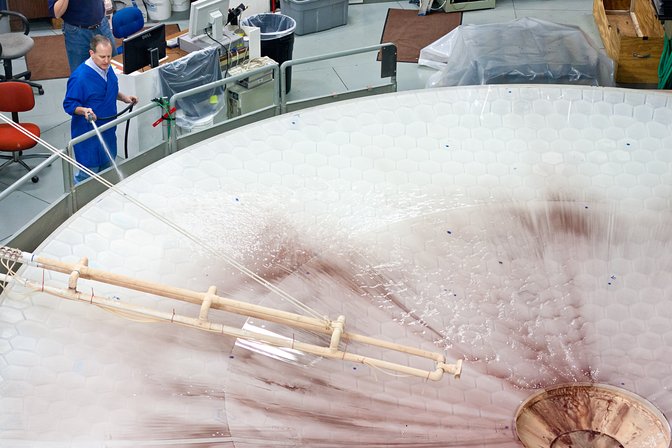Glassworks
While in Tucson, I took a tour of the University of Arizona's Steward Observatory Mirror Laboratory, where they built the mirrors for the big astronomical observatories such as the Giant Magellan Telescope. Two GMT mirrors were in progress and one had been shipped, but the one they were grinding when I visited was for a different instrument, the Large Synoptic Survey Telescope.

Its bizarre shape, with two paraboloids meeting in a central ridge, comes from the fact that it's really two mirrors in one: an annular 8.4m primary surrounding a 5.0m tertiary. The hexagons visible in the glass are a honeycomb pattern of molded holes on its back side, used to keep the mirror lightweight while maintaining rigidity. The honeycomb seems to be aligned with the edge of the mirror all around its circumference, with breaks in the pattern in the interior; it looks like maybe they're using some sort of centroidal Voronoi tessellation?